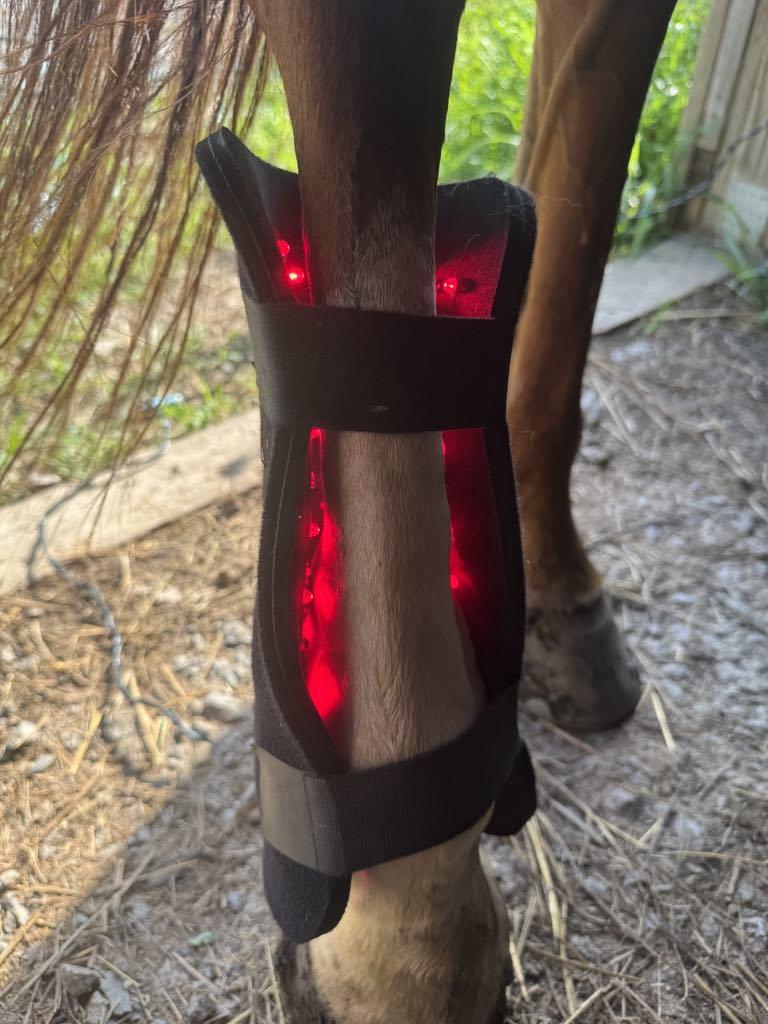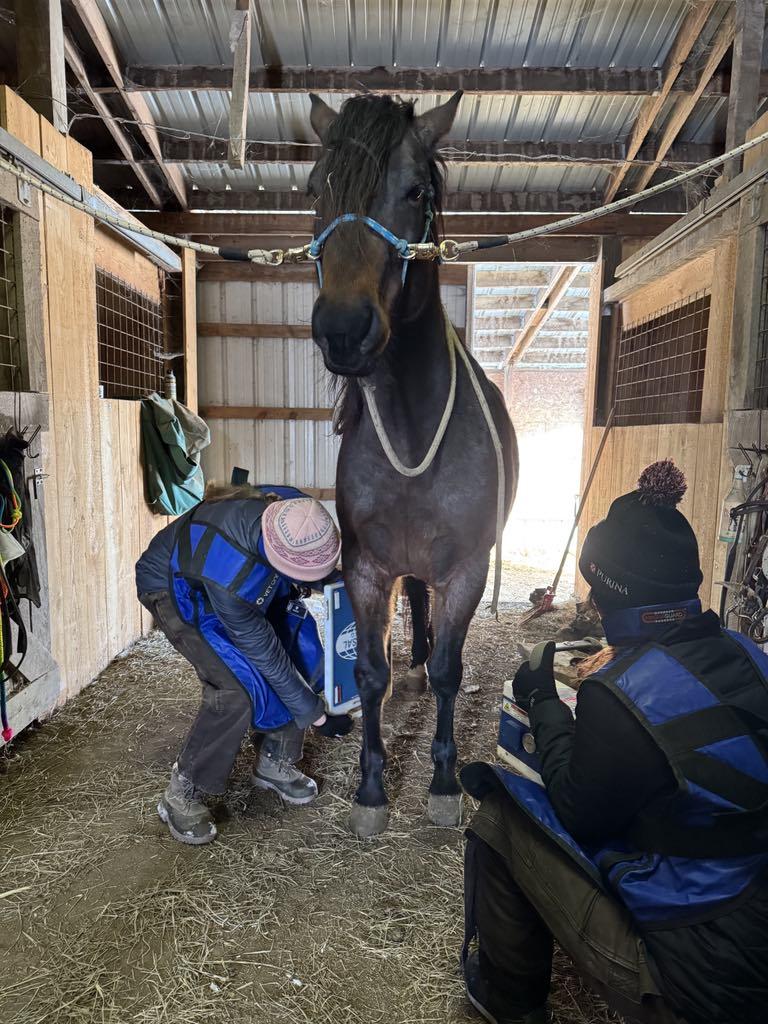“If one thing feels incorrect, don’t default to extra strain, default to extra curiosity. Ask questions. Examine. Be your horse’s advocate. Even the very best rider can’t out-cue ache. However the very best horsemen hear, adapt, and companion by it.”
One of the crucial frequent errors riders make, typically with the very best intentions, is making an attempt to repair a efficiency situation with extra strain when the basis trigger is bodily, not behavioral. It’s straightforward to imagine resistance means your horse is being lazy, disrespectful, or simply not making an attempt exhausting sufficient. However generally, no quantity of kicking, pulling, or correcting will work, as a result of what you’re coping with isn’t a coaching situation. It’s a bodily one.
A bodily situation is any situation that stops a horse from comfortably or appropriately performing what you’re asking. This will vary from apparent lameness to delicate discomforts that have an effect on flexibility, vary of movement, stamina, or psychological willingness.
Some examples of bodily points that may have an effect on efficiency can embrace
Soreness or lameness within the again, legs, or joints.
Poor saddle match inflicting pinching, strain factors, or restricted motion.
Dental points that have an effect on how the horse responds to the bit.
Muscle asymmetry or lack of growth making balanced motion troublesome.
Hoof ache from bruising, abscesses, or incorrect trimming/shoeing.
Neurological points affecting coordination or steadiness.
Ulcers or gastrointestinal discomfort that exhibits up as cinchiness, irritability, or girthy conduct.
Previous accidents or arthritis that flare up below sure sorts of work.
These aren’t issues you’ll be able to right with stronger cues or extra assertive using. They require consciousness, compassion, and infrequently collaboration with a vet, bodyworker, farrier, and/or equine dentist.
Photograph by Kamille Huff
Horses are masters of masking ache, till they will’t. When the ache lastly exhibits up in conduct, it may be mistaken for perspective. In case your horse immediately begins performing off, step one is to ask, “What modified?”
Listed below are frequent pink flags that time to a potential bodily situation:
Resistance to work the horse has beforehand performed willingly
Sudden or escalating conduct issues comparable to bucking, bolting, refusing jumps, stopping at patterns, and many others.
Problem with one lead, one course, or particular maneuvers
Pinning ears, tail swishing, or grinding tooth throughout grooming, saddling, or using
Frequent stumbling or lack of steadiness
Head tossing, rooting the reins, or overreacting to bit strain
Reluctance to be caught or saddled
Modifications in posture, motion, or muscle tone
A horse doesn’t neglect the right way to do one thing in a single day. In the event that they immediately gained’t decide up a lead, gained’t cease easily, or start resisting lateral work, your first query ought to at all times be, “May they be in ache?”

Photograph by Marcella Gruchalak
When a horse is hurting, extra strain doesn’t assist. The strain forces them right into a deeper state of stress or self-protection. Think about somebody yelling at you to run sooner with a sprained ankle. That’s what growing cues or punishment does when a horse is bodily uncomfortable. It doesn’t clear up the issue. It teaches the horse that work equals ache, and that you simply’re not listening. That is the way you break belief, find yourself with realized helplessness, explosive behaviors, or power anxiousness below saddle.

Photograph by Marcella Gruchalak
Nonetheless, most bodily points might be addressed, nevertheless it takes time, teamwork, and endurance.
Get an expert evaluation. If one thing feels off, usher in your vet or chiropractor. Don’t await lameness to get extreme. Many points are simpler and cheaper if addressed earlier. A correct examination can reveal delicate misalignments, tightness, or soreness that is perhaps invisible to the untrained eye.
Consider your tack and match. Poor saddle match is among the commonest culprits of again ache. Even high-end saddles might be problematic in the event that they don’t suit your horse’s form. Examine your bit, bridle, girth, and pads, too. One thing so simple as a twisted pad or too-tight noseband can create discomfort.
Deal with the hooves. We’ve all heard the saying, “No hoof, no horse.” Poor trimming, lengthy toes, or unbalanced hooves can throw off your horse’s complete physique. Work carefully with a educated farrier who understands purposeful anatomy and steadiness.
Modify your expectations and workload. In case your horse is recovering or rebuilding power, cut back. Shorten periods. Deal with groundwork or low-impact workout routines. Consider it as bodily remedy, not punishment. Allow them to transfer appropriately and comfortably earlier than you ask for extra.
Construct power and adaptability over time. Many bodily points stem from weak spot, not harm. Assist your horse construct power evenly by incorporating poles, hill work, stretching, and transitions into your program. Permit time for muscular tissues to develop correctly. Be okay with going gradual.
Hearken to your horse’s physique language. A tail swish, pinned ear, or blown flip is perhaps small, nevertheless it’s communication. The extra you be taught to acknowledge discomfort, the sooner you’ll forestall it from turning right into a critical situation. Your horse needs to do properly for you, however not at the price of their physique.

Photograph by Marcella Gruchalak
You may’t trip your horse by ache and also you shouldn’t wish to. Progress comes from a sound, prepared, and cozy horse. If one thing feels incorrect, don’t default to extra strain, default to extra curiosity. Ask questions. Examine. Be your horse’s advocate. Even the very best rider can’t out-cue ache. However the very best horsemen hear, adapt, and companion by it.








